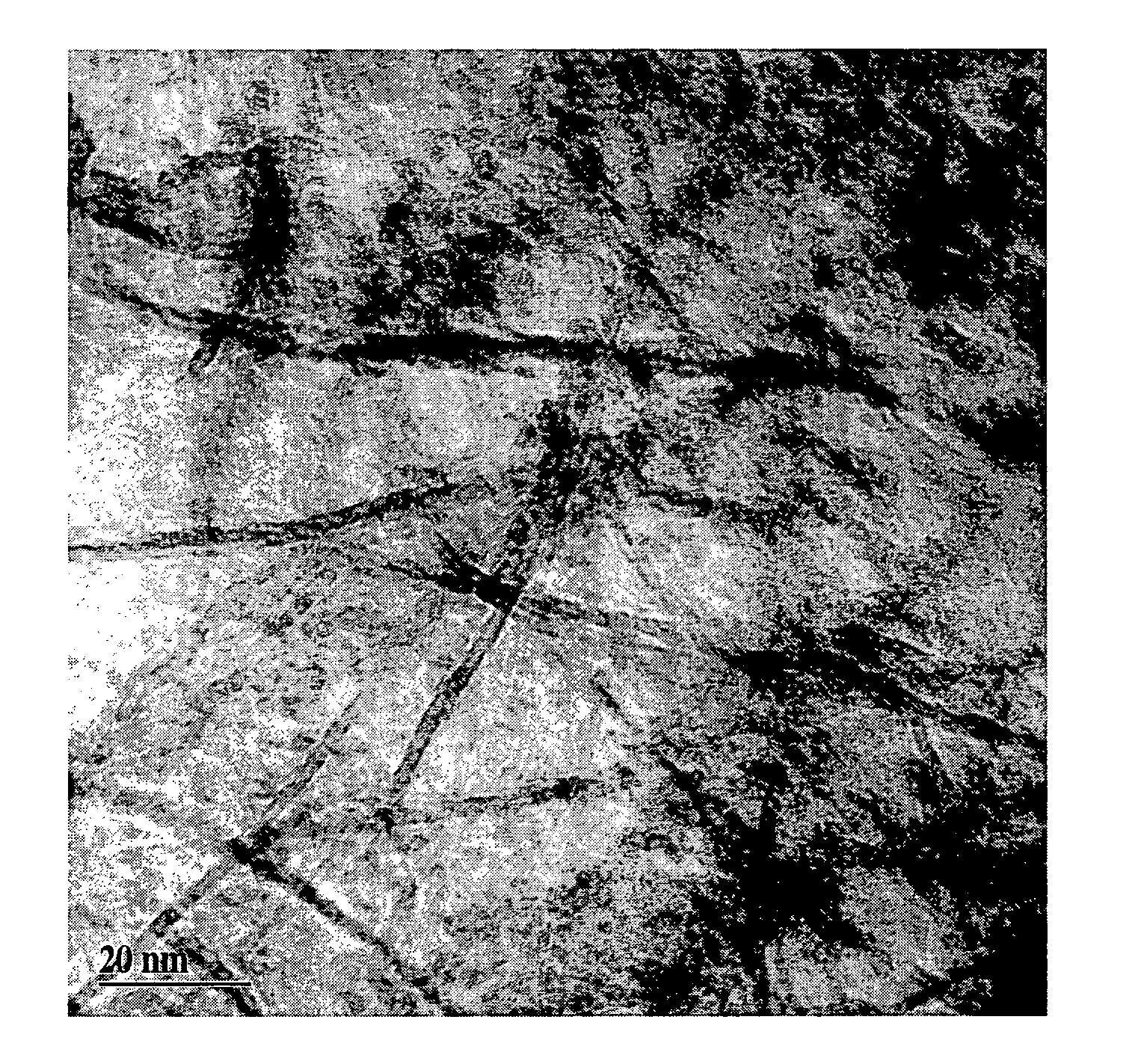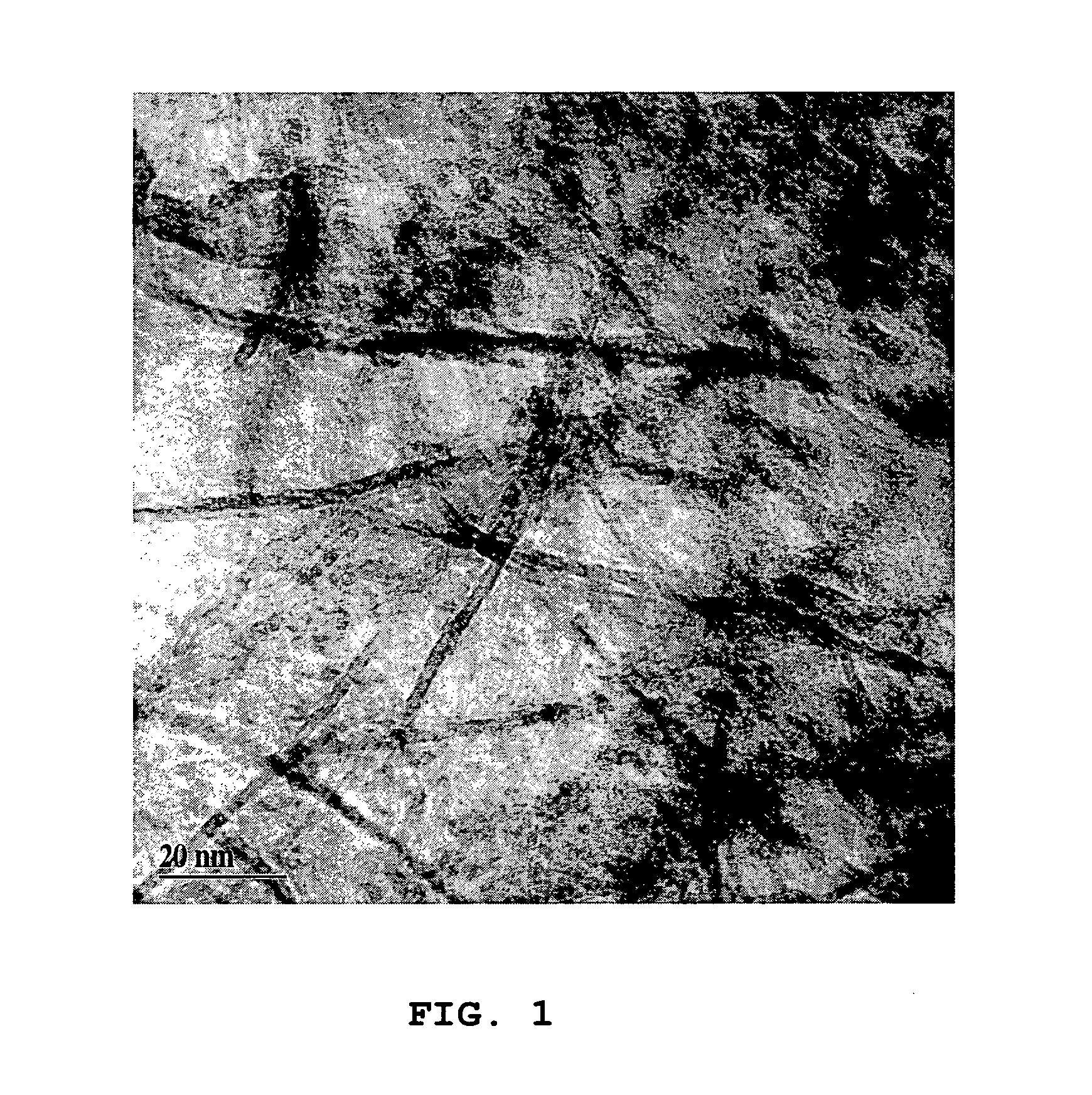Heavy metals absorbent and method of use
a heavy metal and absorbent technology, applied in the field of water purification, can solve the problems of small utilities, costing thousands of lives, and affecting the quality of life of people, and achieving the effect of reducing the number of people who need to be treated, and reducing the number of people who need treatmen
- Summary
- Abstract
- Description
- Claims
- Application Information
AI Technical Summary
Benefits of technology
Problems solved by technology
Method used
Image
Examples
example 1
Preparation of Granular Media
A composite (Alfox 18) of 25 weight percent AlOOH and 75% FeOOH was prepared as follows. Ten grams of aluminum hydroxide, Al(OH)3 (Aldrich Chemical) was added to 500 mL water contained within an opened 800 mL stainless steel pressure vessel. A solution of 0.2 g sodium hydroxide dissolved in approximately about 50 mL distilled water was added and the reactor was sealed. The mixture was heated to approximately 175° C. with a pressure of 130 psi for 2 hrs. The mixture was cooled to ambient temperature, opened, and 60 mL of approximately 28% ammonium hydroxide solution was added, followed by 58.3 g FeCl3 6H2O (Aldrich Chemical) dissolved in 200-300 mL of water. Excess water was decanted and the residual was filtered. The precipitate was loaded into a metal dish and placed for 5 minutes into a preheated 450° C. oven. After cooling, the material was ground to a smaller fraction and heated in an air oven at 250°C. for 4 hours. The granules were sieved to a −...
example 2
Equilibrium capacity was measured for different sorbents by adding a known amount, initially 3-10 milligrams, to a solution of 1 liter of As III or V (prepared as described in Example 1), and mixing with a magnetic stirrer for 24 hours. After filtration of the solid, the filtrate was analyzed for arsenic. If the measured arsenic content was at or near zero value, the experiment was repeated with a smaller amount of sorbent until a measurable amount of arsenic was found in solution, demonstrating the presence of excess sorbent. The equilibrium capacity was determined by calculation of arsenic absorbed per unit weight of sorbent.
The arsenic capacity of Alfox 18 was compared to Apyron Aquabind MP and Bayer AG Bayoxide E-33 (Table 2). Both materials are manufactured and sold as arsenic sorbents. In addition, both contain some form of iron oxide or hydroxide. Another recent innovation is granular ferric hydroxide (“GFH”), developed at the Technical University of Berlin. Data on its ar...
example 3
Preparation and Testing of Filter Media-
a. Sol-gel method preparation of Alfox 4 (39% AlOOH, 11% FeOOH, 52% microglass)—A slurry of Alfox 4 was prepared as follows: Lauscha B-06-F microglass (2 g) was mixed with 550 mL distilled water in a blender for approximately 2-5 minutes at a high RPM setting. Other mineral fibers such as basalt or silica may be used to produce the non-woven structure. Aluminum powder (0.53 grams) was added, either in the form of nano size particles produced by the electroexplosion of metal wire, (Yavorovsky, N. A., (1996) Izvestiia VUZ. Fizika 4:114-35) or 2 μm and 5 μm granules obtained from Valimet (H-2 and H-5 grade). Ammonium hydroxide (4 mL of approximately 28% solution) was then added. The mixture was heated to 70° C. until reaction ceased (about 10 minutes for the nano size aluminum and 1-2 hours, including ultrasonic mixing for the coarser aluminum). After cooling, an additional 4 mL of 28% ammonium hydroxide was added, followed by 2.0 g FeCl3-6H2O...
PUM
| Property | Measurement | Unit |
|---|---|---|
| temperature | aaaaa | aaaaa |
| particle size | aaaaa | aaaaa |
| particle size | aaaaa | aaaaa |
Abstract
Description
Claims
Application Information
 Login to View More
Login to View More - R&D
- Intellectual Property
- Life Sciences
- Materials
- Tech Scout
- Unparalleled Data Quality
- Higher Quality Content
- 60% Fewer Hallucinations
Browse by: Latest US Patents, China's latest patents, Technical Efficacy Thesaurus, Application Domain, Technology Topic, Popular Technical Reports.
© 2025 PatSnap. All rights reserved.Legal|Privacy policy|Modern Slavery Act Transparency Statement|Sitemap|About US| Contact US: help@patsnap.com


